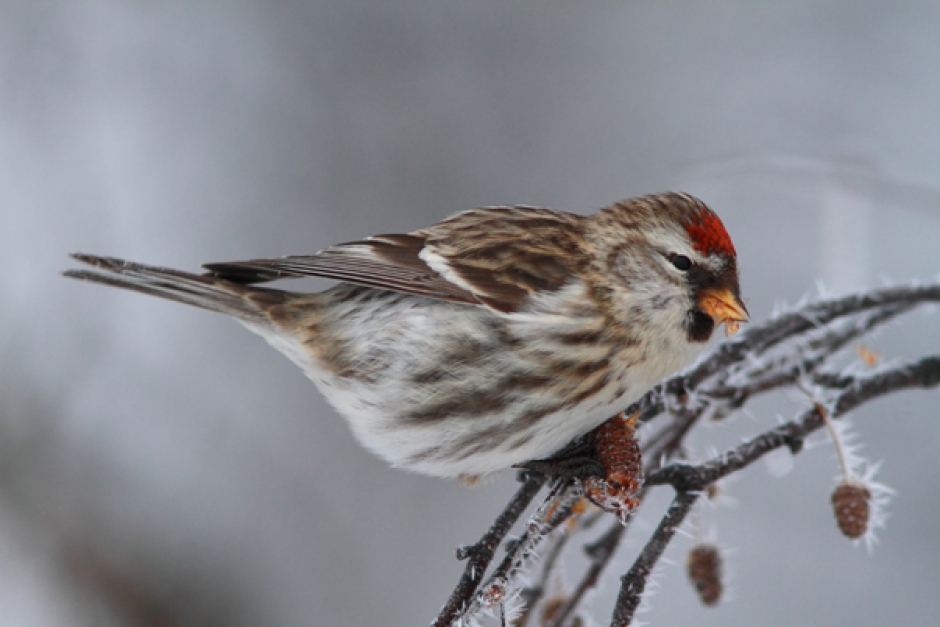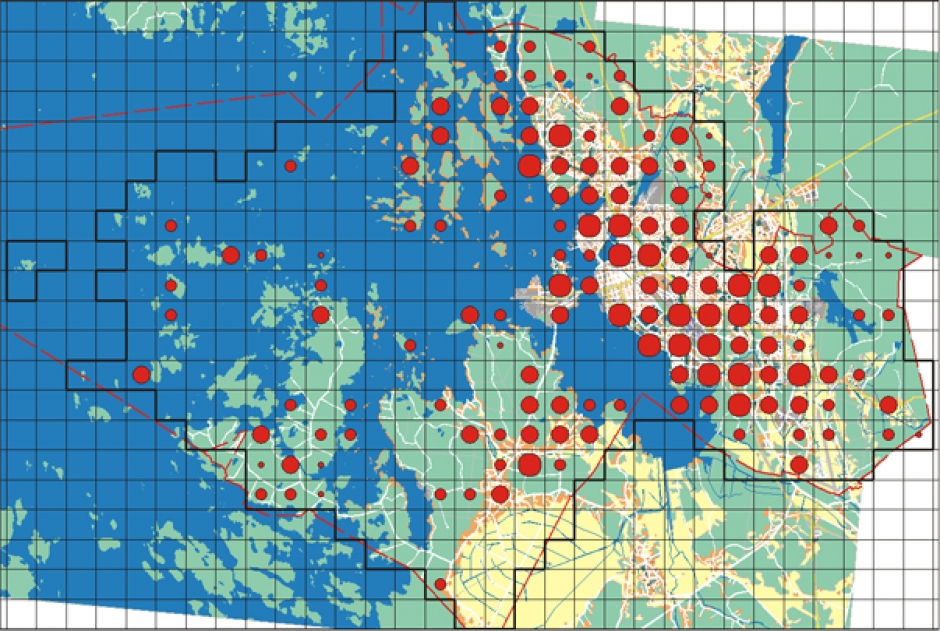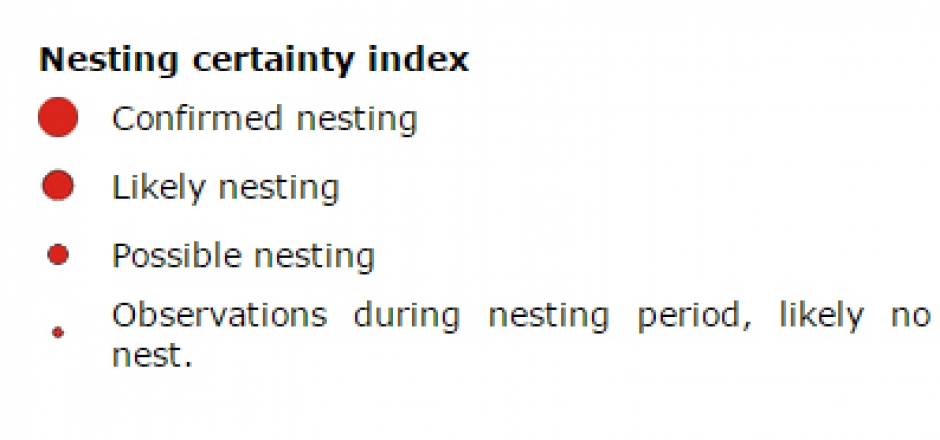Common Redpoll
Carduelis flammea

General information. As with the crossbill, the occurrence of the nesting population of the common redpoll greatly varies. The size of the redpoll population is directly dependent on the amount of available seeds from coniferous and deciduous trees, especially spruce and birch trees. The common redpoll chooses to build its nest in such a place where there is an abundance of aforementioned seeds, mainly occurring during spring.
The nesting season of the common redpoll is an exceptionally long period for a species located this far north. It has adapted remarkably well to utilizing available food resources. The first nests with eggs in them can be found in the beginning of April. The last nesting period occurs during September.
- Length 24 cm
- Excavates a nesting cavity in an aspen or birch tree
- Sedentary species. Migrates occasionally during autumn
- Feeds on seeds, grain and insects. Also visits feeding tables where it eats suet
Habitat. The common redpoll usually lives in birch tree dominated, mixed-type forests with suppressed spruce trees, or where juniper and other types of bushes are prevalent. Dreary spruce inhabited areas are avoided by this species. In an urban environment, it is advantageous to the redpoll if tree populations of varying ages are favored in forest upkeep.
Distribution in Vaasa. The common redpoll was observed in about 140 survey blocks during the nesting season. Occurrence of this species is concentrated in cultural landscape areas and forests near human settlements, and can also be found nesting in the archipelago.


